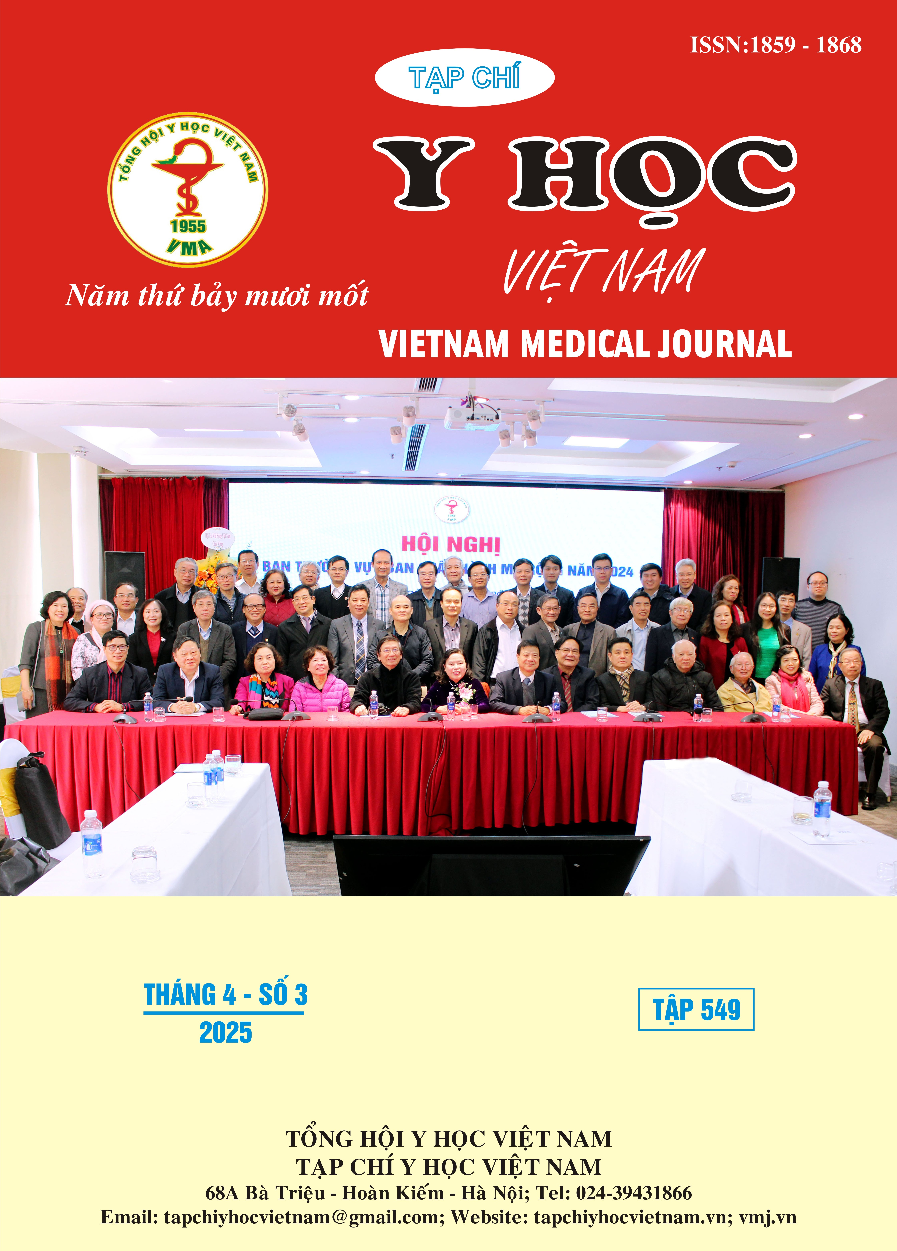REVIEW OF X-RAY AND MAGNETIC RESONANCE IMAGING CHARACTERISTICS OF PATIENTS UNDER SURGERY FOR ADJACENT DOUBLE-LEVEL LUMBAR SPONDYLOLISTHESIS AT 175 MILITARY HOSPITAL
Main Article Content
Abstract
Objective: Review of X- ray and magnetic resonance imaging characteristics of double- level lumbar spondylolisthesis patients with sugery at 175 military hospital. Subjects and Methods: Retrospective description from 5/2020 to 12/2023, 30 cases of double- level lumbar spondylolisthesis were operated by transforaminal lumbar interbody fusionat at the Department of Neurosurgery in 175 Military Hospital. Evaluating X- ray and magnetic resonance imaging characteristics. Results: On X-ray, 60% of patients had spondylolisthesis at L4L5S1 and 40% had spondylolisthesis at L3L4L5. Most patients had grade I spondylolisthesis (63.3%); only 36.7% had grade II spondylolisthesis; 50% of patients had isthmic defect and 60% of patients had degenerative changes on X-ray. On MRI, all patients had disc herniation, of which 86.7% had two-level disc herniation and 13.3% had one-level disc herniation. Most patients had spinal stenosis, foraminal stenosis, facet joint hypertrophy and ligamentum flavum hypertrophy (76.7%). Conclusion: On X-ray, the most common location of spondylolisthesis is L3L4L5 (60%); most patients have grade I spondylolisthesis (63.3%). On MRI, all patients with 2-level spondylolisthesis are often accompanied by disc herniation and the majority have spinal canal stenosis, foraminal stenosis, facet joint hypertrophy and ligamentum flavum hypertrophy (76.7%).
Article Details
Keywords
Double- level lumbar spondylolisthesis, X-ray, magnetic resonance imaging
References
2. Layegh Mahsa, Hejazian Ebrahim (2017) Prevalence of spondylolysis and spondylolisthesis in patients afflicted with chronic back pain in Babol City, Iran, during 2012 and 2013. Iranian Journal of Neurosurgery. 3(1): 8-14.
3. Nikaido T., Konno S. I. (2022) Usefulness of Lateral Lumbar Interbody Fusion Combined with Indirect Decompression for Degenerative Lumbar Spondylolisthesis: A Systematic Review. Medicina (Kaunas). 58(4).
4. Vũ Nguyễn, Giang Nguyễn Thị Hương, Hải Đinh Mạnh, et al. (2023) Kết quả phẫu thuật vít qua da và ghép xương liên thân đốt qua lỗ liên hợp xâm lấn tối thiểu điều trị trượt đốt sống thắt lưng tại Bệnh viện Đại học Y Hà Nội. Tạp chí Nghiên cứu Y học. 171(10): 313-320.
5. Luan H., Wang Y., Liu K., et al. (2022) Efficacy of transforaminal lumbar interbody fusion in the treatment of double-level lumbar spondylolisthesis with sagittal imbalance. BMC Musculoskelet Disord. 23(1): 1038.
6. Eghbal K., Pourabbas B., Abdollahpour H. R., et al. (2019) Clinical, Functional, and Radiologic Outcome of Single- and Double-Level Transforaminal Lumbar Interbody Fusion in Patients with Low-Grade Spondylolisthesis. Asian J Neurosurg. 14(1): 181-187.
7. Iguchi T., Nishida K., Ozaki T., et al. (2012) Grade three disc degeneration is a critical stage for anterior spondylolisthesis in lumbar spine. Eur Spine J. 21(11): 2134-2139.
8. De C., De C. (2021) Impact of Concomitant Spinal Canal Stenosis on Clinical Presentation of Adult Onset Degenerative Lumbar Spondylolisthesis: A Study Combining Clinical and Imaging Spectrum. Cureus. 13(11): e19536


